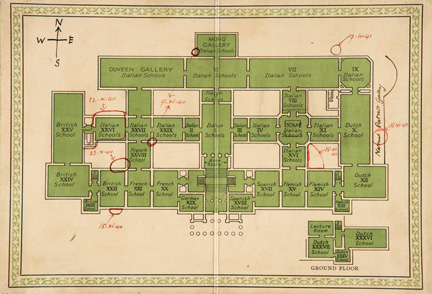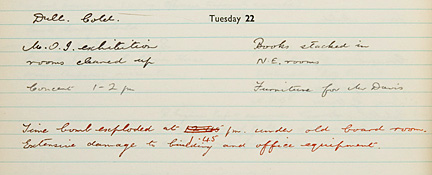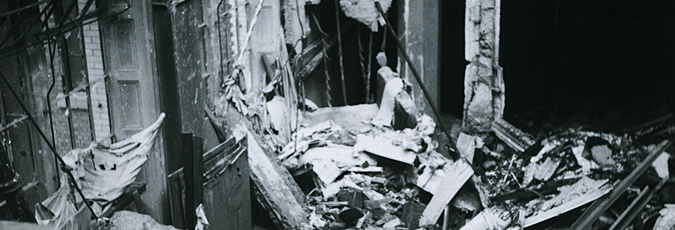Bombs fall on the Gallery
With its imposing Trafalgar Square location, close to the centre of government, the National Gallery was a prime target for enemy fire during the 1940-41 raids, sustaining hits from nine explosive bombs during the period.

In autumn 1940 the building was attacked repeatedly and at 11am on 15 October, Myra Hess was told by phone that a time bomb had fallen and required the immediate evacuation of the Gallery.
For a brief period it seemed as if the concerts' continuous run might finally be broken but within half an hour an alternative venue had been found. A boy was positioned in Trafalgar Square to redirect the audience to the library of nearby South Africa House, where several hundred people heard the Griller Quartet and Max Gilbert play Mozart String Quintets.

The concerts returned to the National Gallery the next day, only for another unexploded bomb, this time a 1,000lb one, to be discovered buried in the wreckage on the 18 October. Undeterred, the audience were shepherded to a room in the east wing to hear the Menges String Quartet while the bomb disposal team got to work.

Then on 23 October at 1.30pm, in the middle of a Beethoven quartet, a third device exploded under the old board room of the Gallery, away from Room 36 where there was a concert taking place. There were no casualties. According to one account, no one in the audience moved and the Stratton Quartet continued their performance without missing a beat.

